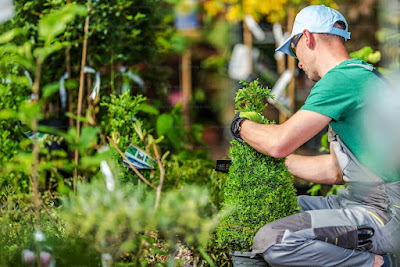Whether you’re a seasoned green thumb or a complete newbie, this guide will walk you through how to grow a garden summer harvest that’s both abundant and rewarding.
Let’s dig into the soil and uncover the secrets of a successful summer garden.
Why Summer Is the Best Time for Gardening
Summer is prime time for gardeners. Warm temperatures, long days, and plenty of sunshine create the perfect environment for a wide variety of fruits, vegetables, and herbs to flourish. Plus, many popular crops hit their peak during this season, think juicy tomatoes, crisp cucumbers, and sweet corn.
If you plan and plant smart, your summer garden can provide fresh produce well into the late months, reducing grocery bills and giving you the ultimate farm-to-table experience right from your backyard.
Planning Your Summer Garden
Before you start sowing seeds, a little planning goes a long way. Here’s how to get your summer garden off to a great start:
1. Choose the Right Location
Most summer crops need at least 6 to 8 hours of sunlight per day. Pick a spot in your yard that gets plenty of direct sunlight and has well-draining soil. Avoid areas with heavy shade or soggy patches.
2. Test Your Soil
Healthy soil is the foundation of a thriving garden. Use a simple soil test kit to check the pH and nutrient levels. Most summer vegetables prefer slightly acidic to neutral soil (pH 6.0 to 7.0). Add compost or organic matter to improve structure and fertility.
3. Select High-Yield Summer Crops
If you're aiming for a productive harvest, go with vegetables and herbs that perform well in hot weather. Some all-time summer favorites include:
Tomatoes
Zucchini
Peppers (hot and sweet)
Eggplant
Cucumbers
Green beans
Corn
Basil
Mint
Watermelon & Melons
Pick varieties that are known for disease resistance and fast growth to maximize your success.
How to Plant for a Successful Summer Harvest
 |
| Image by Unplash |
1. Start from Seeds or Transplants?
Starting from seeds is more affordable and gives you more control, but transplants (young plants from nurseries) give you a head start, especially useful in short-season areas.
Quick tip: If it's already late spring or early summer, go with transplants to save time.
2. Timing Matters
Each plant has its own ideal planting time, but generally speaking:
1. Early summer: Great for heat-loving crops like tomatoes, peppers, and squash.
2. Mid-summer: Sow fast-growing veggies like lettuce, radishes, and bush beans.
3. Late summer: Start planning your fall harvest—think carrots, kale, and beets.
Use a planting calendar for your region to stay on schedule.
Watering and Feeding for Maximum Growth
1. Water Consistently
Summer heat can dry out soil quickly. Most vegetables need 1 to 1.5 inches of water per week, either from rainfall or manual watering. Deep, infrequent watering is better than frequent, shallow sprinkling, it encourages deeper root growth.
Pro tip: Water early in the morning to reduce evaporation and prevent disease.
2. Mulch Like a Pro
Mulch is your summer garden’s best friend. A layer of organic mulch (like straw, wood chips, or shredded leaves) helps:
1. Retain moisture
2. Keep weeds down
3. Regulate soil temperature
4. Improve soil health over time
Spread 2-3 inches of mulch around your plants, but keep it a few inches away from the stems.
3. Feed Your Plants
Fast-growing crops are hungry! Use a balanced organic fertilizer or compost tea every few weeks to keep your garden energized. For heavy feeders like tomatoes and corn, consider a higher nitrogen feed early in the season, then switch to a more balanced or phosphorus-rich option for fruiting.
Pest and Disease Control
Summer gardens attract all kinds of critters. Stay vigilant with regular garden checks. Here are some easy, natural solutions:
Aphids & spider mites: Spray with a mix of water and a few drops of dish soap.
Slugs & snails: Sprinkle crushed eggshells or diatomaceous earth around plants.
Powdery mildew: Improve airflow between plants and avoid overhead watering.
Tomato hornworms: Hand-pick them off, or attract predatory wasps.
Encourage beneficial insects like ladybugs, lacewings, and bees by planting pollinator-friendly flowers like marigolds, sunflowers, and zinnias.
When and How to Harvest
Harvesting at the right time is key to flavor and nutrition. Here’s a quick guide:
1. Tomatoes: Pick when fully colored and slightly soft.
2. Zucchini: Best harvested young (6–8 inches) for tenderness.
3. Green Beans: Pick before the seeds bulge.
4. Cucumbers: Harvest when firm, before they turn yellow.
5. Herbs: Trim regularly to encourage bushy growth; morning is best for picking.
Use clean, sharp tools and be gentle with plants to avoid damage. The more you harvest, the more most plants will produce, so don’t be shy!
Preserving Your Summer Bounty
If your garden is exploding with produce (congrats!), preserve the excess so you can enjoy your harvest even in winter. Try:
1. Freezing: Great for green beans, bell peppers, and corn.
2. Canning: Ideal for tomatoes, sauces, and jams.
3. Drying: Herbs like basil, mint, and oregano are easy to air-dry.
4. Fermenting: Make pickles or kimchi with cucumbers, cabbage, or carrots.
Label everything with dates and store in airtight containers for freshness.
Final Thoughts: Grow a Garden, Reap the Joy
There’s something magical about growing your own summer harvest. You’re not just cultivating food, you’re nurturing life, spending more time outdoors, and reconnecting with nature. Plus, the taste of freshly harvested veggies beats anything you can find in a store.
So whether you have a big backyard, a small patio, or just a few containers on your balcony, now is the perfect time to start. Plan smart, plant with care, and get ready for a season full of flavor, color, and homegrown pride.
Happy gardening!


Comments
Post a Comment